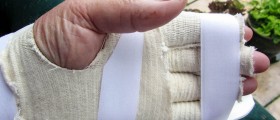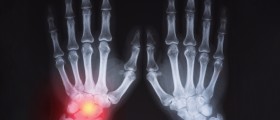
Trigger thumb is a condition which can affect both adults and children. Basically, it involves locking of the thumb, affecting the effectiveness of the hands negatively, interfering with normal, daily activities. When this condition affects children, it is called congenital trigger thumb or pediatric trigger thumb.
Therapy for Trigger Thumb
Since this condition usually stems from tendon irritation taking place in the thumb area, the main goal is taking care of this issue first. Thus, anti-inflammatory medications and thumb immobilization are considered two stages of the first aid.
Anti-inflammatory medications may be non-steroidal or steroid injections and one may also benefit from splints which are connected to the hand disallowing movements of affected joints of the thumb. The splint should be kept on during the night because while sleeping patients tend to move and flex their limbs uncontrollably. Moreover, if the injury and the onset of trigger thumb are serious, the splint may need to be worn during daytime as well.
However, wearing the splint for more than two weeks is not advisable, due to danger of developing joint stiffness which can be permanent.
If trigger thumb has affected a person for more than 4 months, he/she is likely to find the medication treatment inadequate. Namely, corticosteroid injections help after the first dose and only in rare cases one is administered the second and the third injection.
Pediatric Trigger Thumb Facts
When children suffer from this condition, the statistics are quite interesting. Amazingly, in 63% of cases, the problem resolved itself, while partial improvement was present in about 31% of patients over two years. Other studies have shown that applying splints to the affected thumbs resulted in 71% of recoveries over the course of 12 weeks, while only 23% of patients managed to overcome this problem without any treatment.
Surgical Intervention for Trigger Thumb
Surgery can help people overcome trigger thumb. Before the surgery the patient is best not to receive anything more than a local anesthetic. Once the surgery is done, the patient should move the thumb as soon as it is possible to do this without pain or discomfort. Any specific hand rehabilitation therapies are not necessary, unless the patient has scars or suffers from a stiff thumb because of the adhesion.
The surgery itself might go wrong if the doctor performing it is not skilled enough. Then, the digital nerve may be damaged or some other complications might take place.
Finally, splinting is enough for a complete recovery in only 50% of cases. On the other hand, corticosteroid injections are effective in 90% of cases, requiring up to three treatments.














-Arthritis_f_280x120.jpg)

-Symptoms,-Diagnosis,-Treatment_f_280x120.jpg)
Your thoughts on this
Loading...